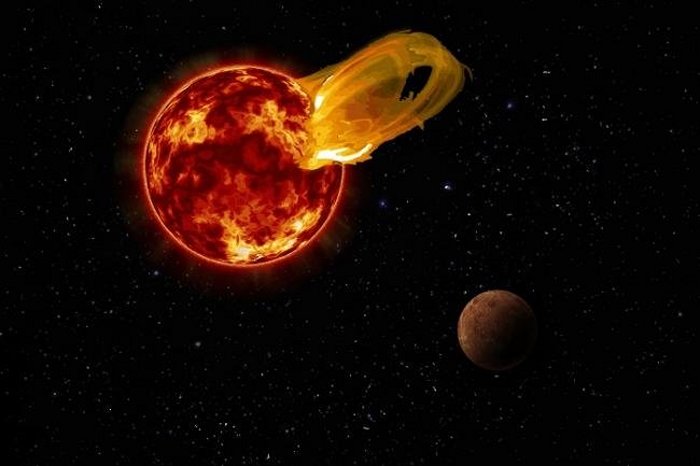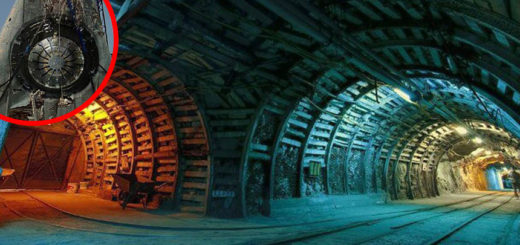Gigantic Stellar Flare Originating From Proxima Centauri Detected By Astronomers
A massive stellar flare – an energetic explosion of radiation – from the closest star to our own Sun, Proxima Centauri, has been detected by astronomers from Carnegie Institution for Science.
At peak luminosity it was 10 times brighter than our Sun’s largest flares when observed at similar wavelengths. The flare increased Proxima Centauri’s brightness by 1,000 times over 10 seconds.

An artist’s impression of a flare from Proxima Centauri, modeled after the loops of glowing hot gas seen in the largest solar flares. An artist’s impression of the exoplanet Proxima b is shown in the foreground. Proxima b orbits its star 20 times closer than the Earth orbits the Sun. A flare 10 times larger than a major solar flare would blast Proxima b with 4,000 times more radiation than the Earth gets from our Sun’s flares. Credit: Roberto Molar Candanosa / Carnegie Institution for Science, NASA/SDO, NASA/JPL.
Astronomers made the discovery when they reanalyzed observations taken last year by Atacama Large Millimeter/submillimeter Array, or ALMA, a radio telescope made up of 66 antennae.
The study raises questions about the habitability of our Solar System’s nearest exoplanetary neighbor, Proxima b, which orbits Proxima Centauri.
Stellar flares have not been well studied at the wavelengths detected by ALMA, especially around stars of Proxima Centauri’s type, called M dwarfs, which are the most common in our galaxy.
“March 24, 2017 was no ordinary day for Proxima Cen,” said lead author Meredith MacGregor.
This was preceded by a smaller flare; taken together, the whole event lasted fewer than two minutes of the 10 hours that ALMA observed the star between January and March of last year.
Stellar flares happen when a shift in the star’s magnetic field accelerates electrons to speeds approaching that of light. The accelerated electrons interact with the highly charged plasma that makes up most of the star, causing an eruption that produces emission across the entire electromagnetic spectrum.
“It’s likely that Proxima b was blasted by high energy radiation during this flare,” MacGregor explained, adding that it was already known that Proxima Centauri experienced regular, although smaller, x-ray flares.
“Over the billions of years since Proxima b formed, flares like this one could have evaporated any atmosphere or ocean and sterilized the surface, suggesting that habitability may involve more than just being the right distance from the host star to have liquid water.”
“There is now no reason to think that there is a substantial amount of dust around Proxima Cen,” Weinberger said. “Nor is there any information yet that indicates the star has a rich planetary system like ours.”
Original story – here.



 Creators of mankind
Creators of mankind Description of “Tall white aliens”
Description of “Tall white aliens” Where they came from?
Where they came from? About hostile civilizations
About hostile civilizations The war for the Earth
The war for the Earth “Tall white aliens” about eternal life
“Tall white aliens” about eternal life Video: “Nordic aliens”
Video: “Nordic aliens” Aliens
Aliens Alien encounters
Alien encounters The aliens base
The aliens base UFO
UFO Technology UFO
Technology UFO Underground civilization
Underground civilization Ancient alien artifacts
Ancient alien artifacts Military and UFO
Military and UFO Mysteries and hypotheses
Mysteries and hypotheses Scientific facts
Scientific facts


















